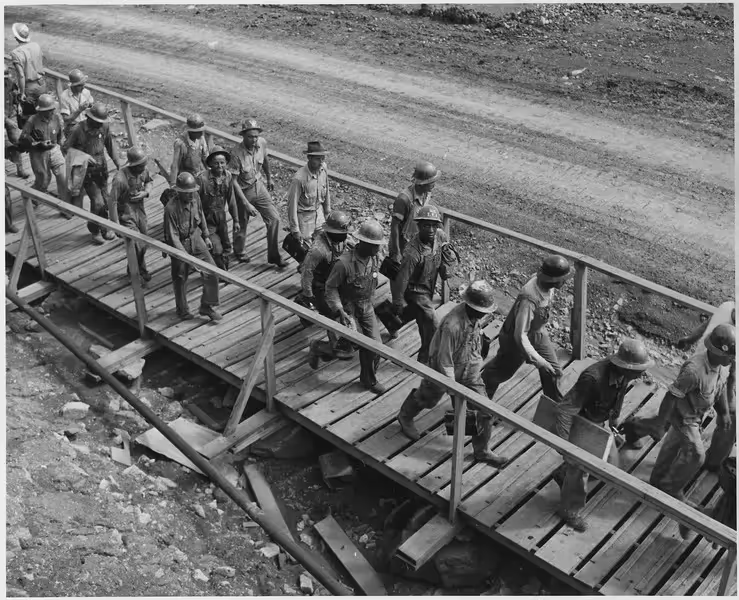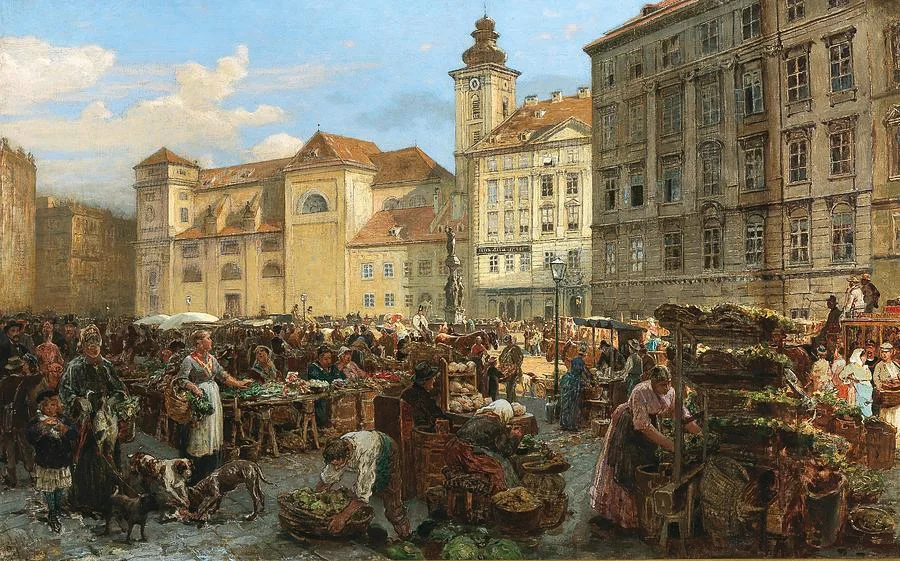
American Aspiration: Our Anti-Dynamism Problem
We should take stock of the behaviors of people in dynamic societies.
Amidst the irrational mood of American politics and the “the-past-was-better” rationale underlying today’s popular economic ideas, including the current tariff bonanza, a refreshing new interest in progress, abundance, and dynamism in America has emerged. This interest spans the ideological spectrum – which is also refreshing – and is born out of a growing awareness that proceduralism, regulation, cronyism, and powerful interests have made it too hard to do big and important things in America. New institutes, think tanks, and publications have sprouted in the past few years to promote progress, and investors have begun making dynamism and American competitiveness a clear goal. Recent books such as Abundance by Ezra Klein and Derek Thompson and Why Nothing Works by Marc Dunkelman build upon the analysis of cultural and economic stagnation in slightly older works, including The Decadent Society by Ross Douthat and The Great Stagnation by Tyler Cowen.
These efforts almost universally agree on the problem – namely, that we have created too many blockages to progress in the name of this or that good intention – but are less clearly united on what constitutes dynamism and progress themselves. What would a more dynamic America look like?
A common assumption among the pro-progress crowd is that if we wave a wand and rid ourselves of permitting processes and bureaucratic sludge, we will see an explosion of innovation. But would we? What if we are not as dynamic as we think we are? There is enough evidence suggesting that people can become less dynamic after living too long in static conditions that we should worry about the question.
Dynamism requires agency, creativity, risk tolerance, and sometimes a simple desire for adventure. Not everyone needs to possess these qualities in equal measure, but as many as possible should. The benefits of a minority of entrepreneurs, inventors, and creators to a society are well-documented, but we seem determined to make that minority as small as possible. The macro-narratives of our grievance politics (in both their left and right versions) and currently vogue economic policies share an assumption that individual effort is over-rated, and that people need protection from macro forces more than an opportunity to strive upward.
This essay is the first in a series that examines dynamism at the individual level. Increasing the speed of AI manufacturing products to market and accelerating housing construction are crucial measures of dynamism. However, we should begin our analysis by examining the behaviors of people in dynamic societies.
For example, one of the most reliable indicators of a growing, dynamic society is that people tend to move frequently. Workers have learned long ago that the surest path to a better standard of living is to move to where the opportunities are, either by relocating to a new city or changing jobs within their current location. This almost always proves to be a surer path up the career ladder than sticking with a single company and awaiting the next promotion.
One of the indicators of stagnation is the opposite: when people choose to stay put rather than pursue opportunity. This has been an increasingly prevalent trend in America over the past twenty years, indicating deeper weaknesses in our economy and culture.
Other indicators of a dynamic society include people leaving a steady job to start a business or choosing to do something new in a way that breaks with convention and ruffles feathers. Moving, entrepreneurship, and innovative thinking – these all require that blend of agency, creativity, and appetite for adventure.
The people who possess these qualities in abundance may be a minority, but they are an essential minority. For instance, new companies are less than ten percent of all companies in any given year, but they create far more new jobs every year than existing small and large businesses do. Innovators have long produced breakthroughs that benefit everyone, regularly creating new ideas and inventions that spill over into the economy and enhance the well-being of others far away. Moving to high-opportunity geographic areas is directly related to higher levels of GDP, and immigrants are disproportionately likely to start new businesses that employ native-born workers. We are understandably – and smartly – drawn to reliability and stability as a species, and we have created entire institutions to provide security in ways that would have been unthinkable to our ancestors, but we all benefit from that group among us who have an above-average appetite for change, risk, improvement, and innovation.
For this reason, we should all be worried about the trends affecting them. Geographic mobility has been steadily dropping for years, and despite all the media coverage of people moving during the pandemic, pre-pandemic declines in mobility have resumed. When immobility happens at scale, everyone loses. Literally. For instance, when high housing costs keep aspiring workers away from an otherwise opportunity-rich area, the economic effects hurt more than just those who want to move but cannot. An oft-cited study has detailed how overly restrictive housing policies lowered aggregate GDP in America by 36 percent over a 45-year period. A third fewer people move annually today in America than 20 years ago. Startups, that quintessential force for new job creation in America, have declined for 40 years. So have high-growth firms that start small and grow large. Startups experienced a welcome surge during the pandemic, a trend economists are still trying to understand, although that pace has recently begun to cool.
Policymakers – consumed as they are with a chaotic tariff policy in the current administration and massive industrial policy spending in the previous one – hardly seem to care about any of this. They treat starters, builders, and creators as a secondary constituency. Because this group is a dispersed minority – approximately one-third of small businesses are younger than 5 years old, for example, and exist in various industries – they are not an apparent political coalition. I have written previously that they constitute a “new forgotten man” who is neither part of the elite that everyone loves to hate nor the wage earner that everyone in Washington, D.C., pretends to care about. As I have also written, this has happened against a backdrop of shared skepticism on the political left and right about the entrepreneurial ethic as both sides have preferred to focus on worker protections and social insurance policies for a variety of political and other reasons.
A society that neglects the engines of dynamism eventually becomes stagnant. It does not happen overnight, but like the frog in the warming pot, it is too late by the time you realize you are in trouble. Nobel laureate Edmund Phelps has documented how formerly dynamic societies in Europe began to stagnate due to the rise of corporatism, social insurance, and other well-intentioned institutional and policy decisions aimed at providing security. Britain’s current flatlining economy should be understood not merely as a GDP problem or a post-Brexit hangover but as a crisis of dynamism itself. Stagnant regions across the American heartland are often singled out as examples of “creative destruction,” but often they are the result of too little rather than too much dynamism – or, put another way, not enough “creative” and therefore too much “destruction.”
It is reasonable to hope that America will become more dynamic if the “progress movement” succeeds in lifting regulatory barriers and directing more private investment to high-impact technology. But it is not unreasonable to worry that it will not. That is why it is important to keep our eyes on whether more people in more places are making and creating more good things, and also moving around to be a part of all that new activity.
The series of which this essay is the first will explore the building blocks of a dynamic society, which should be a top priority for policymakers, business leaders, and civic leaders who care about future prosperity. Dynamism, as we will see, is more than just an economic concept, although it is that, too. Some of its most reliable indicators are measurable as economic phenomena, while some of its most important elements are not so easily measurable. A taste for adventure, a desire to express oneself creatively, a dissatisfaction with the status quo, an appetite to experiment – these are harder to measure than, say, the number of startups every year or patents filed, but they are essential for producing the economic phenomena that we can measure.
America needs a dynamism agenda, and our political class seems mostly uninterested. So, the agenda needs to come from outside—from business leaders, investors, coalitions of business owners, researchers, writers, and civic leaders. Before that, though, we need to better understand dynamism as a sociological, psychological, and economic reality—and understand its enemies—so that we can harness its power more effectively for the future. I will address these and related issues in a series of forthcoming essays.
Ryan Streeter is executive director of the Civitas Institute in the School of Civic Leadership at the University of Texas at Austin.
Economic Dynamism

The Causal Effect of News on Inflation Expectations
This paper studies the response of household inflation expectations to television news coverage of inflation.
.avif)
The Rise of Inflation Targeting
This paper discusses the interactions between politics and economic ideas leading to the adoption of inflation targeting in the United States.

Texas Stands on Commerce
Clear limits on shareholder resolutions have made Texas a model of business certainty — and business is flooding in.

America Needs Its Hidden Champions
From imaging systems to next-gen GPS, small and midsized manufacturers are quietly rebuilding America’s industrial and defense backbone.








.jpg)



.avif)




